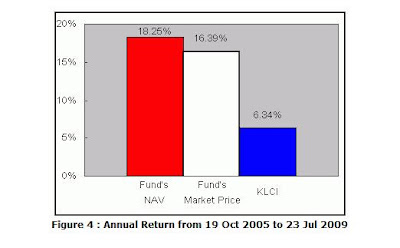1) Airasia
According to TTB, he thinks Airasia is a well-managed company and it is expanding aggressively. Due to this kind of aggressive expansion, Airasia leveraged quite heavily to finance the purchase of new airplanes.
ICAP believes that Airasia could make an outstanding profit and also penetrate well into the aviation industry during good time, however it would invite high risk as well while encountering bad time.
After ICAP invested into Airasia not too long at year 2008, the world financial market faced a rapidly deteriorated economy due to the bankrupcy of Lehman Brother. So the pessimism was spread so furiously and caused a huge confidence risk as most banks wanted to withdraw their credit. As a result, ICAP concerned about Airasia could be in trouble due to liquidity risk amid the confidence risk. Thus ICAP sold Airasia decisively for security purpose. The disposal made a gain of RM540,000.
2) Axiata
It was not ICAP's intention to invest Axiata. Axiata is the product of the demerging exercise of Telekom Malaysia Berhad ("TM"). ICAP was initially investing TM before the announcement of demerging TM Internationl ("TMI") from TM (TMI was subsequently renamed as "Axiata").
The initial investment of TM was not because of Axiata. In fact, ICAP is more interested to the fix-line telephone business that still under TM now. Thus ICAP decides to keep the original TM shares after the demerging plan and was finding a good timing to dispose Axiata.
However, the reality always to its back to investors as it happened the opposite way as what ICAP has expected. Instead of finding a good timing to dispose Axiata at a higher price, Axiata's announcement of Right Issue with an issue price of RM1.12 per share and also the 'Lehman Panic' incident just sent its share price to a hell down from around RM8 to the lowest at RM1.47. Since the Right Issue was RM1.12 and thus it was very dilutive to the existing shareholder if he decided not to subsribe the Right Issue offer. So what was the reason that ICAP dispose Axiata and realised a loss of RM14 million without further subscribing the Right Issue?
TTB explained that Celcom is the gem of Axiata and so far the best performing subsidiary. Nevertheless, Malaysian cellphone market is going to be saturated and thus it will step into a mature stage. Hence TTB doubt that whether Celcom can further support other non-performing subsidiaries of Axiata? Axiata's the other 3 subsidiaries are either stuck in a mass loss or a slight marginal gain situation, thought I believe they are turning the situation these few years.
All these 3 other subsidiaries are operated at foreign markets and their accounts are recorded with foreign currency amounts, and thus they are subject to a great foreign currency exchange rate risk while consolidate into Axiata's group account. (Note: for my own opinion, i think the foreign currency exchange rate risk is a non-issue as the foreign currency exchange rate is too fluctuate that today can make a foreign currency exchange gain and tomorrow these would be a foreign currency exchange loss. As a whole, this foreign currency exchange gain and loss is just an accounting issue and thus will offset each other in long run, unless the depreciation or appreciation of the the foreign currency exchange rate is a structural change).
Though the 3 oversees subsidiaries seems to have very good potential, it is a question that when will they break even and start to contribute to Axiata's bottom line. Moreover, Axiata was in heavy debt to TM. This is the reason why Axiata wanted to engage the Right Issue in order to spin off the debt to TM. However, after paying the debt to TM, Axiata borrows a huge debt funding again for the acquistion of the shareholding of another subsidiary, i.e. "Idea". So Axiata's net gearing rises once more and TTB thinks the aggressive expansion via high debt funding seems not a wise move. In fact, the existing 3 oversees subsidiaries still have room to improve and thus post a better organic growth. Instead of improving internally, Axiata chooses an easier way to grow via acquisition and thus taking more financial leverage risk to turn around another subsidiary.
As ICAP did not want to further expose to the Axiata's high leverage risk and also there were other better investment opportunities than Axiata at Bursa Malaysia, ICAP decided to dispose off Axiata and used the remaining proceed to invest into other more promising counters.
(This was almost the same reason that I wrote in the previous thread to indicate that why ICAP realised Axiata at a loss of RM14 million).
http://kinwing.blogspot.com/2009/08/icapaxiata8-8-2009.html






















